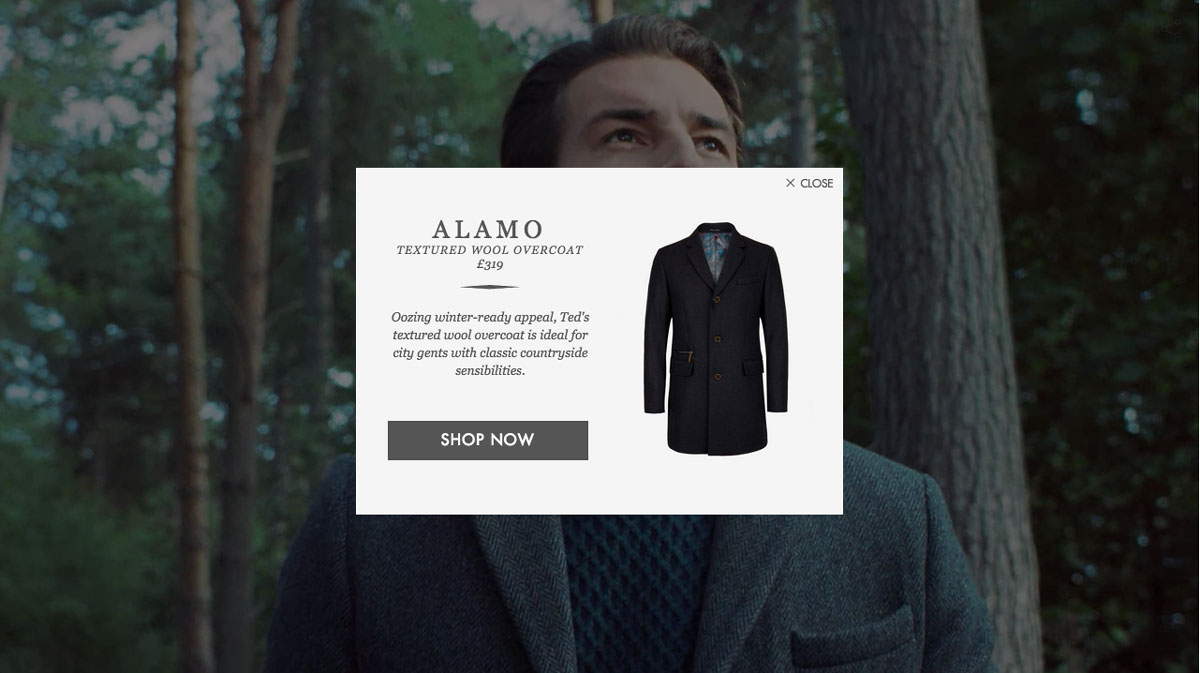Ultimately, content marketing has only one goal – to drive sales.
This is especially important in the ecommerce industry. With around 80 percent of people making a purchase online every month, the challenge for ecommerce businesses to attract new customers has never been greater.
Ecommerce retailers need to deliver content that addresses the needs of today’s busy consumer, and there’s one growing trend that deals with this challenge: shoppable content.
It presents a huge opportunity for brands to engage shoppers and gain the competitive advantage.
[bctt tweet=”7 Types of Shoppable Content That Work” username=”constantcontent”]
What is Shoppable Content?
Shoppable content is any type of content that offers consumers a direct opportunity to buy a product within just a few clicks. With clear product recommendations or purchase points, the strategy helps to increase engagement and bridge the gap between browsing and buying.
Convenience isn’t the only factor. With fewer steps between seeing a product and being able to purchase it, shoppable content improves conversion rates. It also helps brands easily measure conversions through content.
Why Shoppable Content Matters
What makes shoppable content so powerful? In short, it’s what consumers want.
A survey by DemandGen shows that 91% of consumers favor interactive content over traditional content. But that’s not all.
According to report by Styla, shoppable content can help companies drive more traffic and better convert that traffic.

Source: Styla
So, what does shoppable content look like? Here are 7 types of shoppable content and real-life examples to inspire your content strategy.
7 Types of Shoppable Content
1. Text
You don’t have to have the most sophisticated system in place to sneak shoppable content into your content strategy. Clear text with a link is all you need.

Designer clothes retailer Net-A-Porter uses simple anchor texts of “Get the Look” underneath images, giving readers a direct path to product pages.
2. Photos
Product images are crucial to ecommerce businesses, but you can make them more valuable by adding shoppable tags to each image. When clicked, the tag – or hotspot mark – leads users to a product page or popup window featuring buying options.
Furnishings retailer One Kings Lane has a website full of attractive images, with hotspot marks on many pieces of furniture. Click on the mark and the user is directed to a detailed product description with an “Add to Cart” button.

3. Videos
Videos have become one of the most powerful storytelling tools for marketers. By 2019, internet video traffic will account for 80 percent of all consumer traffic online. The demand for shoppable product videos is only going to increase.
For its last Christmas campaign, Ted Baker produced an interactive, shoppable video with hotspots embedded into the video.

Users could click on a hotspot, read more about the product and either hit a “Click to Shop” button during the video, or continue watching to see other products.

If you did click on one of the callouts, it opened a popup with the product description, price, and CTA to purchase the item.
4. Blog Posts
Blog posts are a great place to build customer confidence and push customers along the sales funnel. Home furnishings retailer Crate and Barrel make it easier for website visitors to purchase items featured in blog posts with “Buy It Now” options attached to blog images. This gives users the gratification of shopping without interrupting the reading experience.

Net-A-Porter also uses shoppable content in their company blog. Articles on the website also include subtle callouts to related products. Clicking the little + icon allow readers to checkout right form the article.

Social media platforms caught on to shoppable content pretty quickly. Pinterest came up with buyable pins, where pinners could buy products directly within the app. Instagram created shoppable posts with a shopping bag icon that takes users directly to a company’s product page. To set up Instagram shopping for your business, check out this Instagram guide on how to set up shopping.
Online furniture retailer Wayfair uses this feature and now has a huge following on Instagram.

6. Digital Magazines
Digtial magazines are a growing trend in the ecommerce industry because they’re an efficient way to attract new customers, build an audience, and boost sales.
The Edit by Net-A-Porter is a great example of a digital magazine, published weekly by the retailer. Customers can download the Net-A-Porter app and then shop directly from the magazine by hovering over any product image.


7. Quizzes
Shoppable quizzes are the closest customers can get to having their own personal shopper. Users get to personalize their buying journey by answering a series of short questions, which results in a personalized product recommendation.
Murad hosts a “Personalized Skincare Consultation” on their website to determine the ideal cleanser for each user. Users simply answer a few questions to find the most suitable cleanser, and it takes them to a simple product page with an “Add to Cart” button.

Murad also has a quiz about finding the SPF match.

Shorten the Buyer’s Journey
Content engagement is important, but only if it ultimately leads to a sale. By incorporating shoppable features into your content marketing strategy, you can reduce the number of steps potential customers have to take from content to purchase.

Use these examples as something to aim toward in your content strategy. Soon, many consumers will expect to be able to buy products directly from website content. The most successful brands will be those that exploit these new ecommerce opportunities and cater to this new audience, because the trend is only likely to get bigger.
Constant Content works with expert content and copywriters who specialize in creating content that converts shoppers. Learn more about our ecommerce content service.

